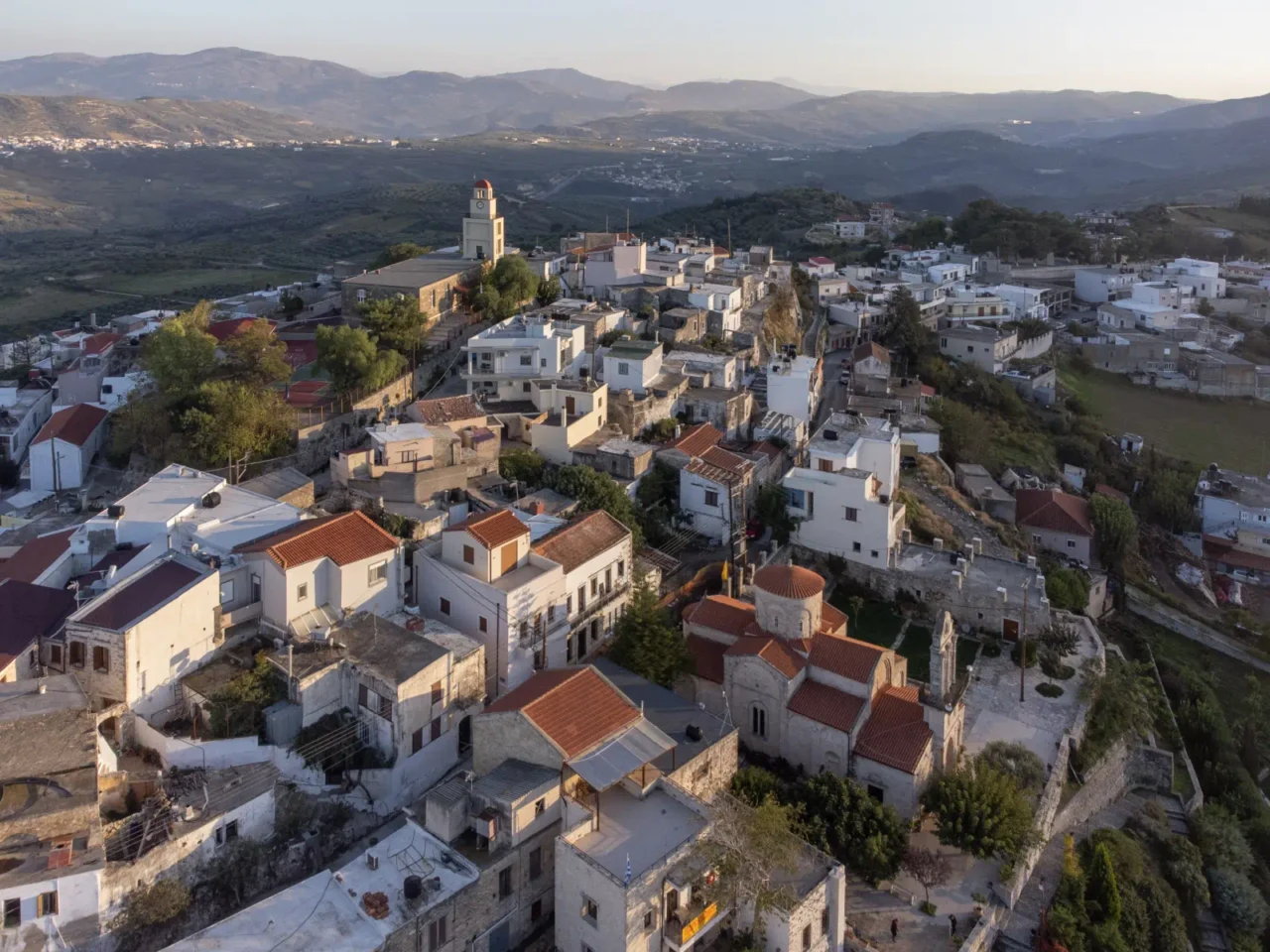
Agios Myronas is a village and the seat of the community of the same name in the Heraklion municipality, located in the Heraklion regional unit on the island of Crete, Greece. Previously part of the Malevizi province, it sits at an altitude of 450 meters and is 19.8 kilometers from Heraklion. The village is known for its well-preserved traditional architecture and its picturesque location on two hilltops.
Historical References
The area has a rich history dating back to the Minoan era, with the ancient city of Raikos believed to have flourished in the same location. Archaeological findings from the Minoan and Roman periods, including inscriptions and coins, have been discovered and are housed in the Heraklion Archaeological Museum. In the early 20th century, Minoan seals and a Late Minoan vase were found in Agios Myronas. Additionally, a chamber tomb from the Late Minoan III A period, containing four sarcophagi and pottery, was discovered in 1941. In 1966, a significant Minoan cemetery was unearthed at the site of Vrysi, revealing sarcophagi from the Neopalatial period and pottery dating back to the Late Prepalatial and Early Old Palace periods.
The village’s current name derives from Saint Myron, who was born in ancient Raikos and served as the Bishop of Crete in Gortyn at the end of the 4th century. The first written mention of the village appears in a 1281 contract honoring Saint Myron. In the 1583 census by Kastrofylakas, the village is referred to as “Samiro” with 254 inhabitants.
During the Ottoman occupation, Agios Myronas became a center of resistance. Many villagers participated in the Macedonian Struggle (1904-1908), the Theriso Revolt alongside Eleftherios Venizelos, and the Balkan Wars of 1912-1913. Four residents heroically lost their lives in the Greco-Italian War of 1940, and the entire village actively participated in the resistance during the Axis occupation.
In 1856, the village was completely destroyed by an earthquake but was subsequently rebuilt. Today, it stands as one of the most impressive villages in the region, known for its traditional architecture and picturesque setting.
Location and Dimensions
Perched atop two hilltops, Agios Myronas commands a panoramic vista of the surrounding landscape. Located 19.8 kilometers southwest of Heraklion in the Heraklion regional unit, the village enjoys a blend of rural tranquility and accessibility to the island’s capital. Its elevation of 450 meters adds to its scenic allure, offering breathtaking views of the Cretan countryside.
While precise dimensions remain elusive, Agios Myronas is characterized as a traditional Cretan village, with its layout likely shaped by centuries of organic growth. Narrow streets meander through clusters of whitewashed houses, while olive groves and vineyards paint the surrounding hillsides, creating a picturesque tableau.
Historical Significance
Agios Myronas holds historical significance on multiple fronts. Its association with Saint Myron, a revered figure in Cretan ecclesiastical history, lends the village a spiritual dimension. The archaeological discoveries in the area underscore its importance in understanding Crete’s Minoan past. Moreover, the village’s active role in resistance movements against Ottoman rule and during World War II highlights its contribution to the island’s struggle for freedom and self-determination.
Population Data Over the Years
Year |
Population |
|---|---|
1583 |
254 |
1961 |
1,117 (1,122) |
1971 |
820 (821) |
1981 |
867 (869) |
1991 |
695 (699) |
2001 |
700 (705) |
2011 |
612 (613) |
Current Status
Today, Agios Myronas thrives as a village with approximately 720 residents. Agriculture and livestock farming remain the economic mainstays, with the region’s renowned grapes and wine continuing to play a vital role. The village’s educational infrastructure, including a primary school, a secondary school, and a high school, caters to the needs of its younger generation. Essential services like a police station, a post office, and a regional medical center further enhance the quality of life in Agios Myronas.
The village’s architectural heritage, characterized by a harmonious blend of old and new buildings, adds to its charm. The imposing cathedral of Agios Myronas, housing the saint’s tomb and relics, serves as a spiritual and cultural focal point. The annual festival on August 8th, celebrating Saint Myron’s feast day, brings the community together in a vibrant display of faith and tradition.
In conclusion, Agios Myronas stands as a testament to Crete’s enduring history, cultural richness, and the resilience of its people. It is a village that seamlessly merges its ancient past with its present vitality, offering a captivating experience for residents and visitors alike.
Village Key Points
- Historical References: The village’s history dates back to the Minoan era, with the ancient city of Raikos located in the same area. It was first mentioned in writing in 1281 and was known as “Samiro” in 1583.
- Location: Agios Myronas is situated on two hilltops, 19.8 kilometers southwest of Heraklion, in the Heraklion municipality on the island of Crete, Greece. It has an altitude of 450 meters.
- Dimensions: The village is relatively small, with a traditional Cretan layout characterized by narrow streets and whitewashed houses.
- Historical Significance: Agios Myronas has a long and rich history, serving as the birthplace of Saint Myron and a center of resistance during the Ottoman occupation. It also boasts archaeological findings from the Minoan and Roman periods.
- Current Status: Agios Myronas is a village with a population of approximately 720 inhabitants. The primary occupations are agriculture and livestock farming, with the region being particularly known for its grapes and wine. The village is also recognized for its well-preserved traditional architecture and its harmonious blend of old and new buildings. It features a primary school, a secondary school, a high school, a police station, a post office, and a regional medical center.
Access
Agios Myronas is 4.3 kilometers away from Krousonas and 2.8 kilometers away from Dafnes.
















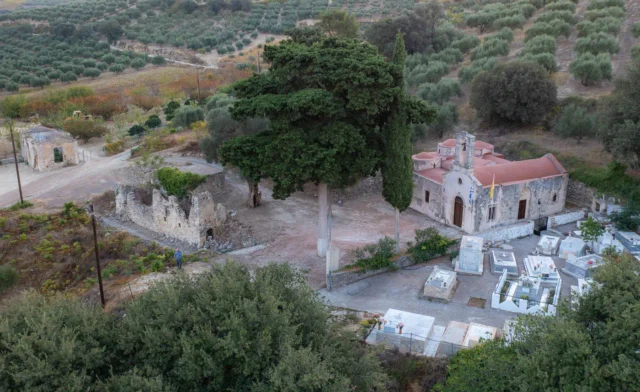
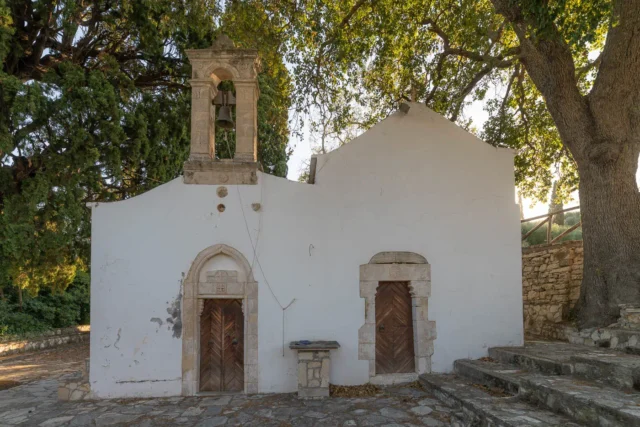
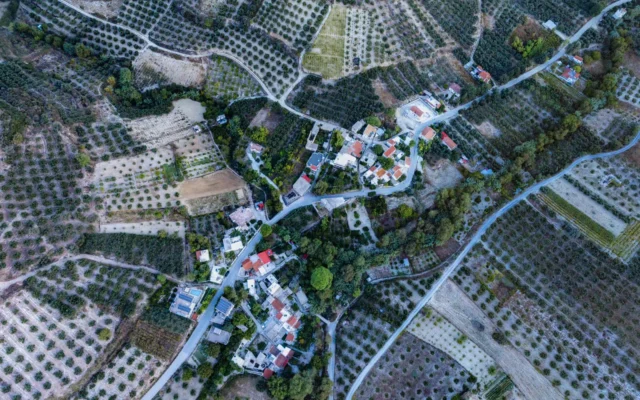



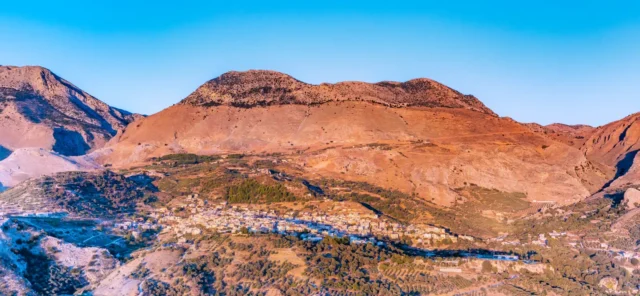
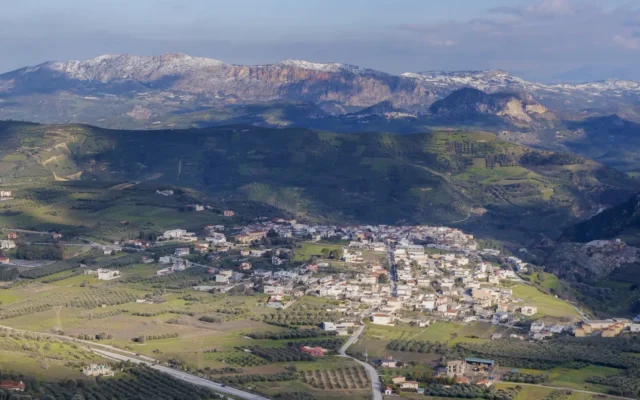
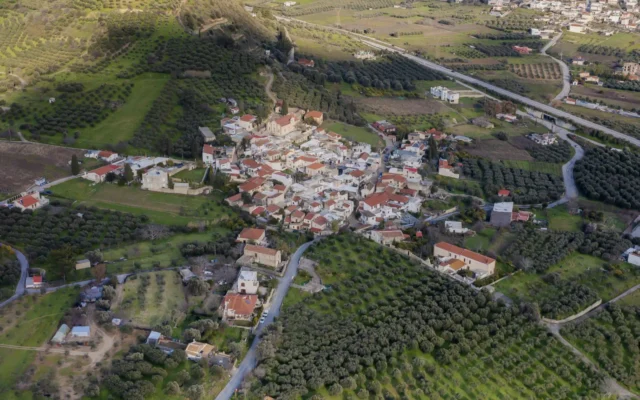

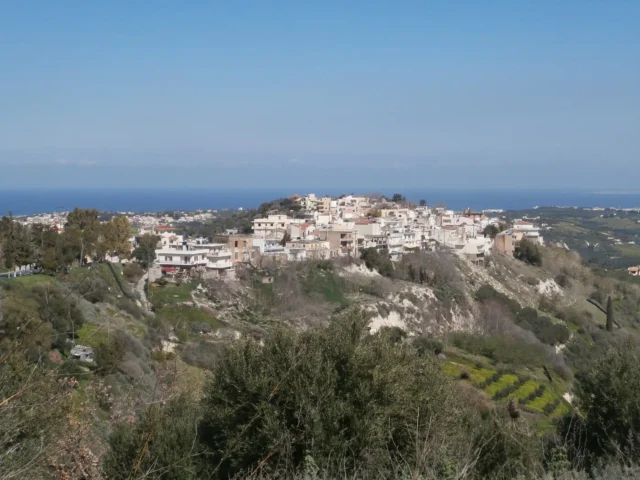
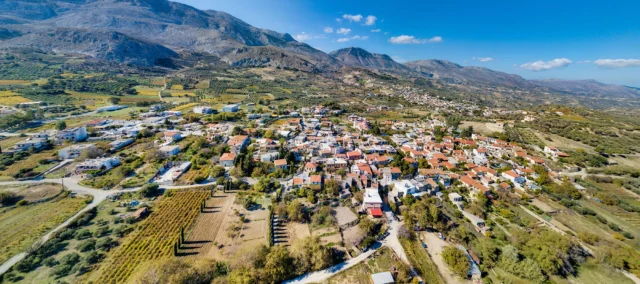
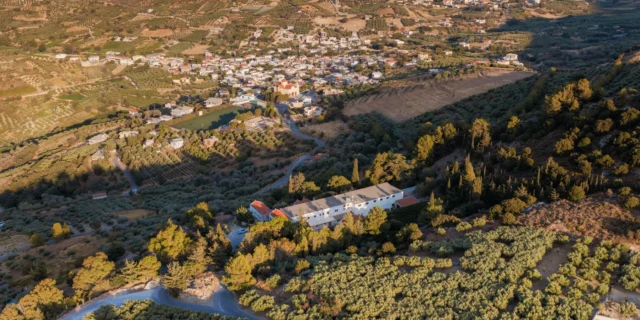
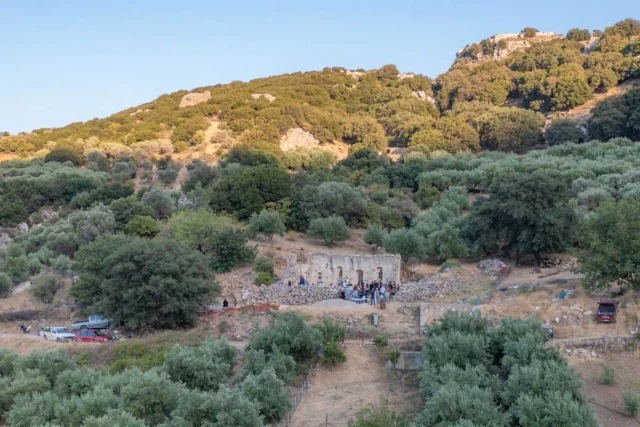
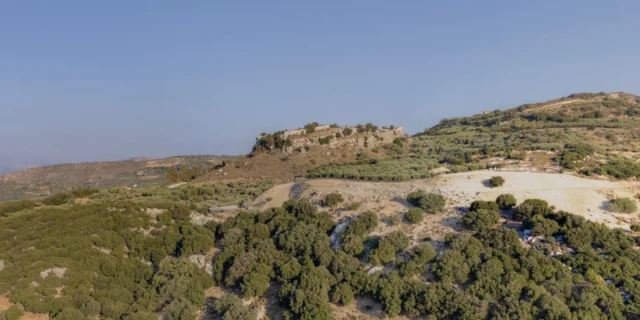

There are no comments yet.